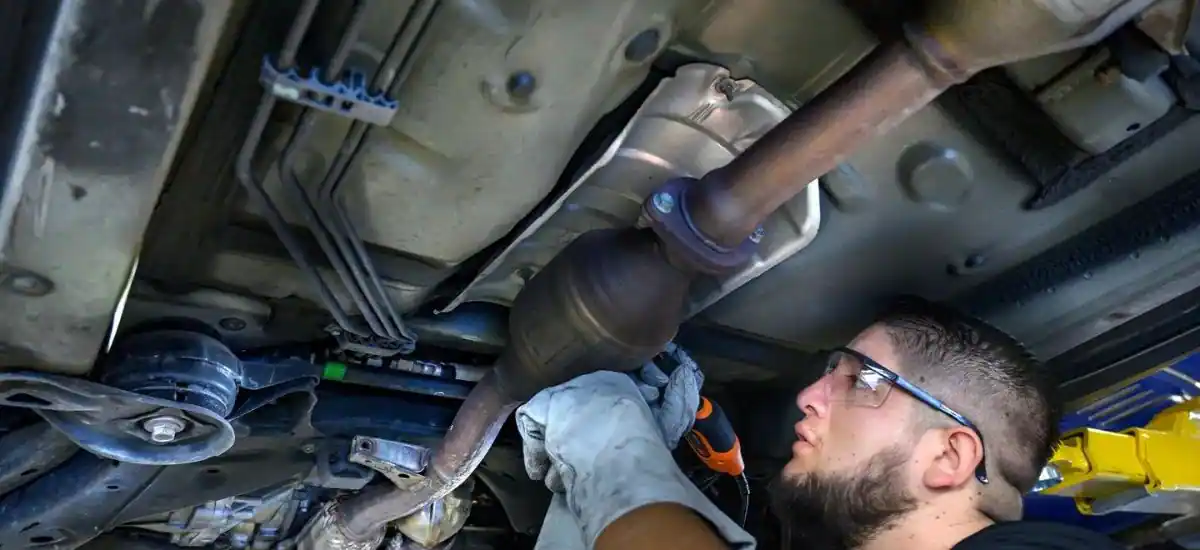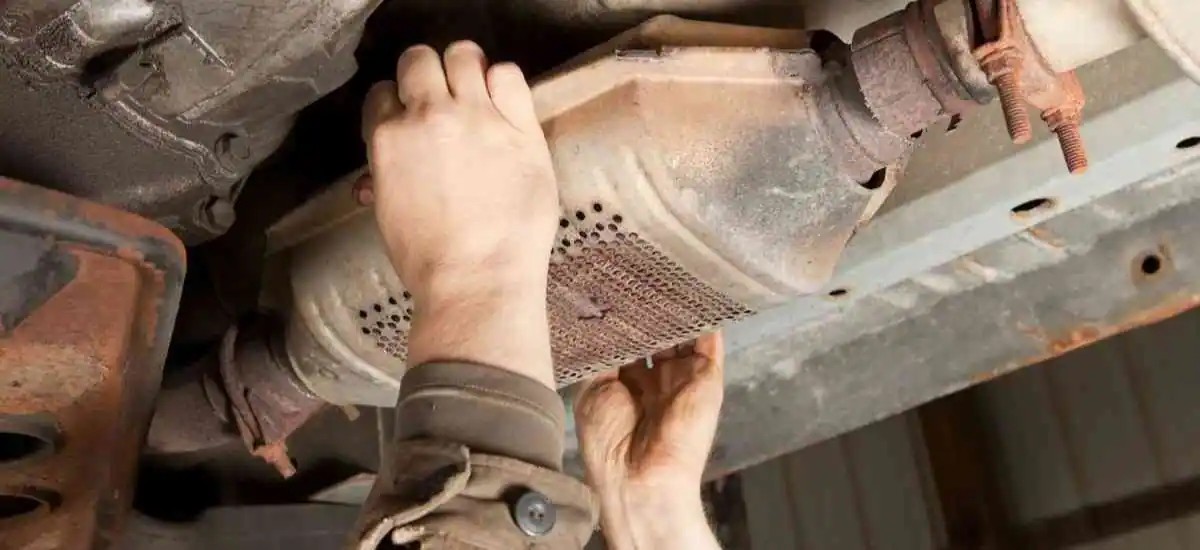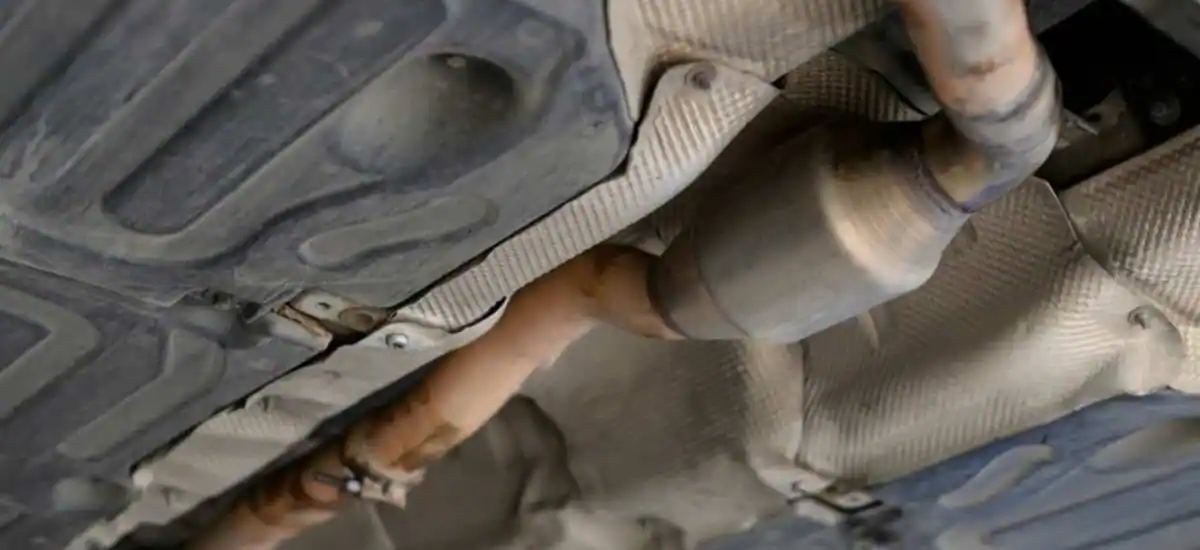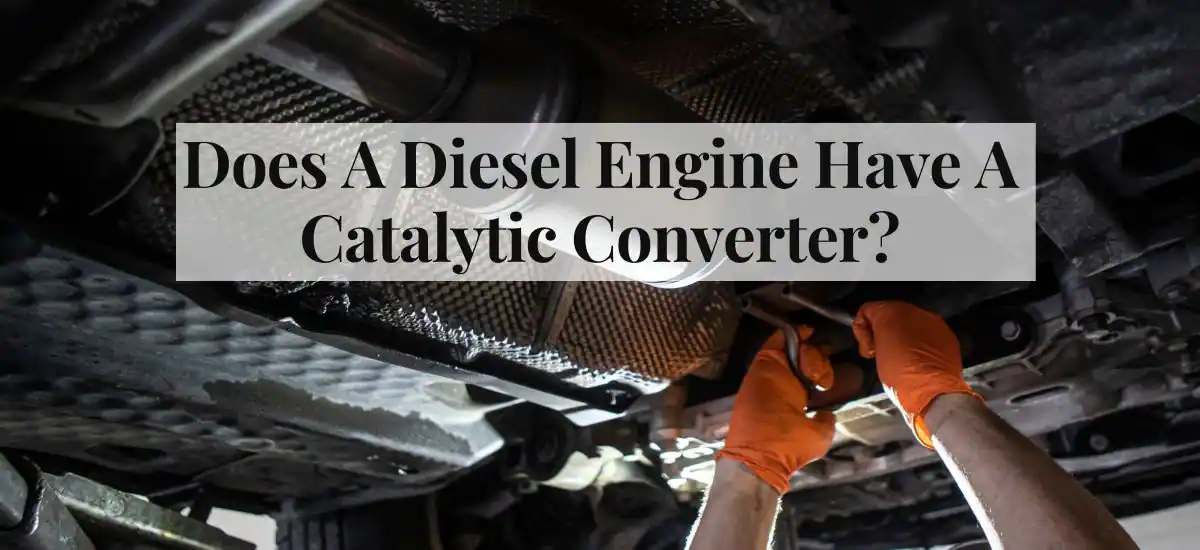Yes, a catalytic converter is in many diesel cars, but not in the same way it is in a gas-powered car. Some diesel engines have a two-way catalytic converter with a diesel oxidation catalyst, but it could be a three-way design with an SCR reduction.
The emissions from a diesel engine go through four stages: the EGR (Exhaust Gas Recirculation), the DPF (Diesel Particulate Filtration), the DOC (Diesel Oxidation Catalyst), and the SCR (Selective Catalytic Reduction) (Selective Catalytic Reduction). During the DOC and SCR stages, chemical reactions are set off by the catalysts to cut down on emissions.
What Does A Catalytic Converter Do?
A catalytic converter uses a Catalyst chamber to change harmful compounds from an engine’s emissions into safe gases, like steam. It works to break up the harmful molecules in the gases that a car gives off before they are released into the air.
The catalytic converter is under a car and looks like a large metal box. It has two pipes coming from it. The converter uses these two pipes and the catalyst to clean up the gases so they can be released safely.
The “input” pipe on a car’s engine is where gases are brought in. When these are blown over the catalyst, a chemical reaction breaks up the pollutants. The less dangerous gases now go through the second pipe, or “output,” which is connected to the tailpipe of a car.
How Does The Diesel Catalytic Converter Work?

Your car’s diesel catalytic converter does more than filter out pollution. It can also move things around. The catalytic converter changes the chemicals in exhaust fumes by moving the atoms around.
The majority of the work is done in four stages.
- DOC (Diesel Oxidation Catalyst)
- DPF (Diesel Particulate Filter)
- SCR (Selective Catalytic Reduction)
- EGR (Exhaust Gas Recirculation)
1. Diesel Oxidation Catalyst (DOC)
In every diesel system, there is something called a Diesel Oxidation Catalyst. Usually, it is the first part of the exhaust system.
It converts carbon monoxide into carbon dioxide and decomposes any un-spent fuel. This part of the diesel catalyst system works like a gas catalytic converter in terms of how it does its task.
The DOC is usually the smallest part of a diesel converter. Still, it is also the most valuable part because this is where most platinum and palladium are found, making recycling expensive.
2. Diesel Particulate Filter (DPF)
Diesel engines make a second pollutant that an internal combustion engine doesn’t. Most of the time, they are called “particles” or “soot.” The DPF uses a wall-flow monolith with alternating open and closed channels to catch these particles from the inlet side and hold them until they can be broken down and removed through a process called “regeneration.”
The process of regeneration is like the process of oxidation in the DOC, which involves burning organic matter to make CO2 and water.
A small amount of platinum and palladium is put in the DPF to help the catalysis process. Soot must also be heated to a high temperature to burn and pass through the filter and exhaust pipe walls. Usually, the computer inside the vehicle controls regeneration.
3. Selective Catalytic Reduction (SCR)
This element controls the reduction of NOx emissions. The rare metal rhodium helps a three-way converter reduce nitrogen oxides so they may be broken down into their component molecules, nitrogen, and oxygen.
Rhodium, however, cannot efficiently reduce NOx in a diesel converter due to the high oxygen content of diesel exhaust. As a result, rhodium is typically absent from diesel converters.
Instead, the SCR uses a Diesel Exhaust Fluid made of urea or ammonia. Catalytic materials are still present in the ceramic pillar but are typically not recyclable. Diesel exhaust fluid and catalysts can efficiently remove NOx from the exhaust.
The “ammonia slip catalyst,” located near the back of the biscuit, is a type of SCR catalyst that contains a trace amount of platinum. Its objective is to purge the system of any excess ammonia. Typically, there needs to be more platinum in this area to make recycling worthwhile.
4. EGR (Exhaust Gas Recirculation)
Exhaust gas recirculation (EGR) is a way to reduce NOx emissions from most diesel engines, from light-duty engines to medium- and heavy-duty engines to low-speed, two-stroke marine engines.
EGR helps reduce NOx emissions, but it comes at a cost. Usually, other steps are needed to avoid unacceptably high increases in fuel use, PM, HC, and CO emissions, engine wear, and engine durability.
To deal with these trade-offs in commercial diesel engine applications, engine makers have had to make several other technological changes at the same time, such as:
- Reductions in lubricating oil consumption,
- Increases in fuel injection pressure,
- Increased use of diesel oxidation catalysts,
- Increased intake manifold boost pressure.
Common Problems Of Diesel Engine Catalytic Converters

Contamination
If the cylinder head is broken, engine coolant can leak out of its place and into other parts of the car, like the catalytic converter. This can make it harder for the exhaust gases to move through the converter.
Carbon Deposits Blockage
Over time, carbon builds up on the catalytic converter, making it hard for the system to work. If the converter gets blocked, it won’t be able to do what it’s supposed to.
Stopping The Free Flow Of Exhaust Gas
For a car’s engine to work well, it needs a steady flow of air. If the gas from the exhaust system can’t flow freely, it will affect the flow of air, which will affect the engine in the long run. This is a problem that the cat converter often has.
Overheating
Faulty Diesel fuel doesn’t burn well when the glow plugs are broken or the exhaust valve leaks. When this happens, the engine is likely to overheat because the fuel that hasn’t burned yet may be sent to the converter to be burned properly. This will make the converter not work.
Physical Damage
The catalytic converter is attached to the underside of a car so that it lines up with the engine and the exhaust pipe. Sadly, this exposes the part to mechanical actions that can cause it to wear out, break, or become damaged over time.
How Long Does A Diesel Catalytic Converter Last?
The average life of a diesel catalytic converter is ten years or 100,000 miles. But this will also depend on how long the vehicle stops and how many stops it makes. If you stop and start your car often, the catalytic converter will wear out faster than if you drive long distances without stopping.
Because the engine is turned off before the catalytic converter reaches its best temperature range, it only partially speeds up reactions. Even though catalytic converters last a long time, they must be checked regularly for damage on the outside and inside. It costs a lot to replace one that’s been broken.
How Do You Fix Diesel Engine Catalytic Converters Problems
Clear Out The Converter
First, unclog the catalytic converter with a degreaser solution and hot water if the problem is caused by carbon buildup. When ready, soak the converter in the solution for about an hour.
Then, get a pressure washer and turn it to a low setting. Then, use the water to rinse the part carefully and let it drain and dry properly. After that, put the part back in. Also, remember that a diesel catalytic converter cleaner can do the job.
Replace Broken Parts That Go Together
If the problems with the catalytic converter were caused by a broken oxygen sensor, head gasket, etc., make sure to replace the same part that broke. But before you replace a part, you should carefully diagnose the problem to figure out which part is broken.
Change Out The Car’s Catalytic Converter
Lastly, if you’ve tried everything else and the catalytic converter still won’t work, replace it. Replacing a cat converter can cost a lot of money, but it’s better to fix a problem early on before it gets worse.
Can The Car Run Without A Diesel Catalytic Converter

Nothing prevents the car from driving without the catalytic converter. The engine will continue to function so that you can stay upright. However, the emission rules will differ, and you may experience engine performance issues.
Moreover, catalytic converters are mandated by law. You may be subject to fines if you operate your vehicle without one. It is not your responsibility to have an emissions test, so that is not the issue; nevertheless, the safety inspection may highlight it when you renew your registration.
Frequently Asked Questions
1. Where Is The Cat On A Diesel Truck?
The catalytic converter is usually on the bottom of the truck, between the engine and the muffler. It is part of the truck’s exhaust system.
2. Which Diesel Catalytic Converters Are Worth The Most?
According to figures from 2020, the most expensive catalytic converter was the Ferrari F430’s $3,770.00 model. Moreover, the F430 required two of these. Thus a full replacement would cost $7,540 in addition to labor costs.
3. What Are The Most Sought-After Catalytic Converters To Steal?
Catalytic converters use platinum, rhodium, and palladium, valuable metals, to speed up chemical reactions. Catalytic converters are often stolen because they contain valuable materials. The thieves make money by selling the parts to scrap yards or metal recycling plants.
Check More Posts :

